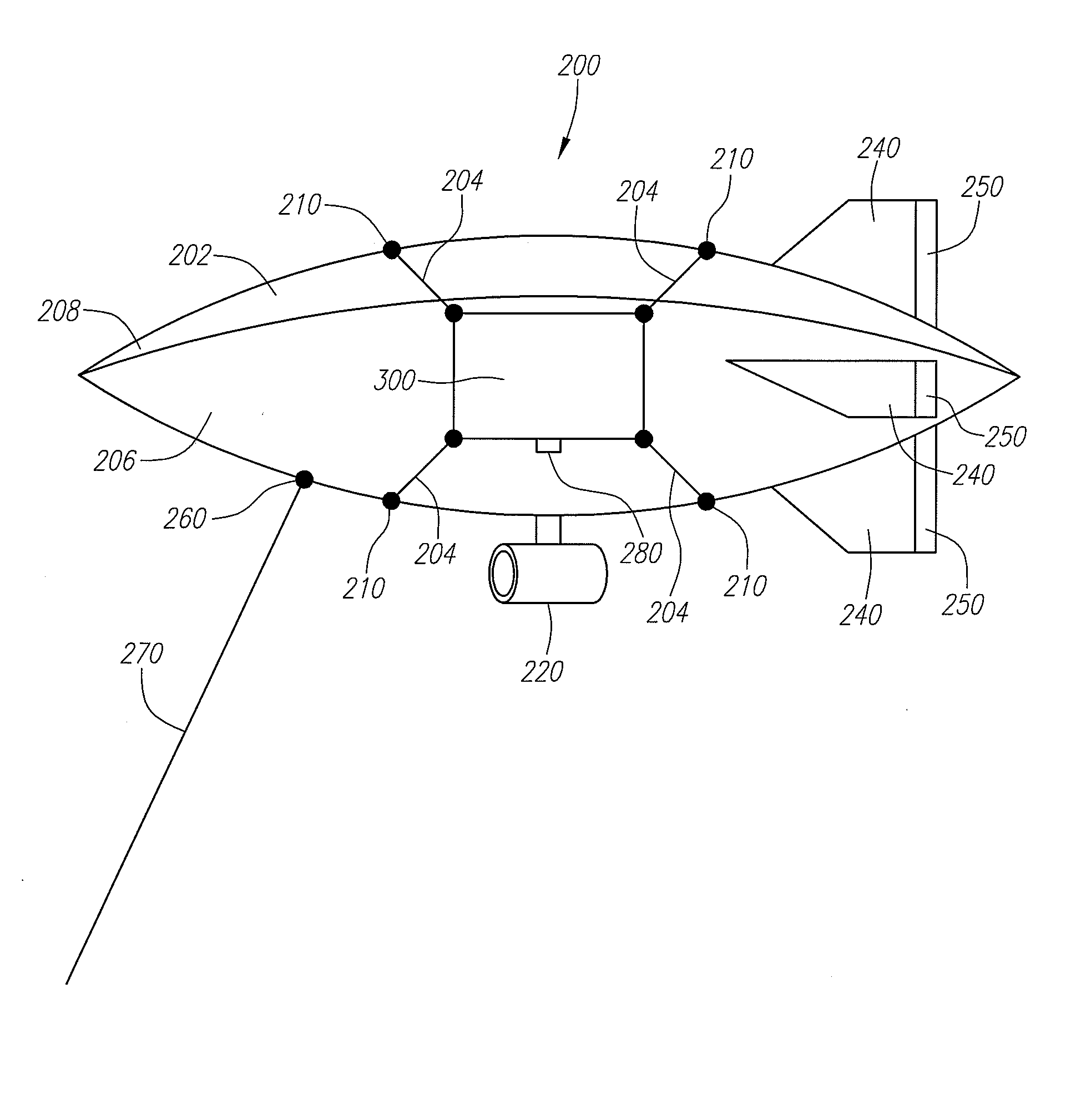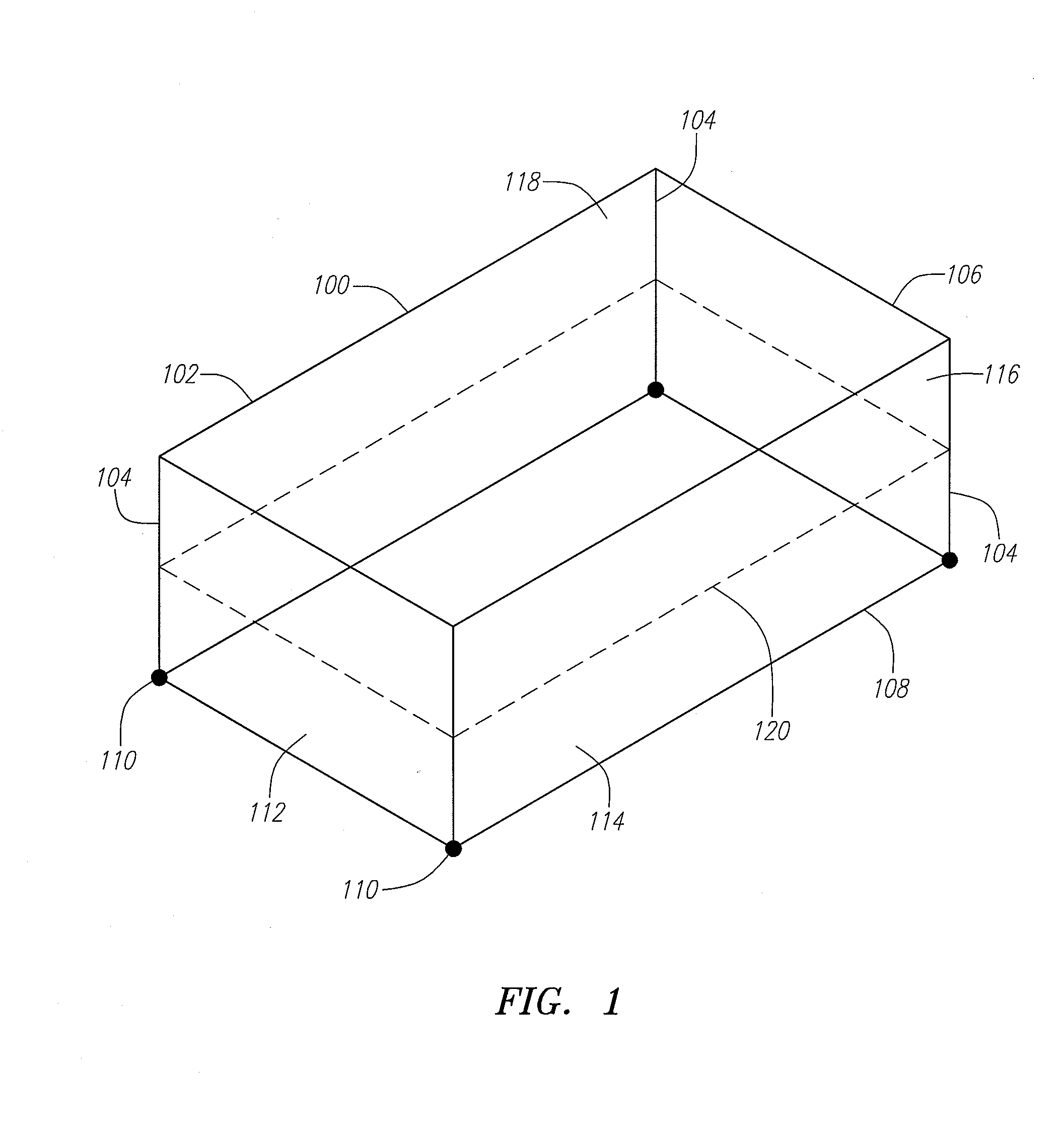Helium-cooled leds in a floating illumination system
a floating illumination system and led light technology, applied in the direction of landing aids, lighting and heating apparatus, lighting support devices, etc., can solve the problems of impracticality or impossible use of heavy cranes, inability to drill holes in ceilings or roof support structures, and inability to achieve lighting quality from point-source such as bare bulbs, so as to maintain the safe operation of leds and minimize heatsinks. the effect of size and weigh
- Summary
- Abstract
- Description
- Claims
- Application Information
AI Technical Summary
Benefits of technology
Problems solved by technology
Method used
Image
Examples
Embodiment Construction
[0033]Before explaining the preferred embodiments in detail, it is important to understand that the invention is not limited in its application to the details of the construction illustrated and the steps described herein. The invention is capable of other embodiments and of being practiced or carried out in a variety of ways. It is to be understood that the phraseology and terminology employed herein is for the purpose of description and not of limitation.
[0034]Referring now to the drawings, wherein like reference numerals indicate the same parts throughout the several views, a representative lighting balloon 100 optimized for indoor use is shown FIG. 1. In a preferred embodiment, balloon 100 comprises: an envelope 102 having a generally flattened, or mattress shape; a plurality of supports 104 tying a front side 106 to a back side 108 such that envelope 102 maintains its general shape when inflated with helium; and a plurality of tie-down points 110 for the tether lines 170. The t...
PUM
 Login to View More
Login to View More Abstract
Description
Claims
Application Information
 Login to View More
Login to View More - R&D
- Intellectual Property
- Life Sciences
- Materials
- Tech Scout
- Unparalleled Data Quality
- Higher Quality Content
- 60% Fewer Hallucinations
Browse by: Latest US Patents, China's latest patents, Technical Efficacy Thesaurus, Application Domain, Technology Topic, Popular Technical Reports.
© 2025 PatSnap. All rights reserved.Legal|Privacy policy|Modern Slavery Act Transparency Statement|Sitemap|About US| Contact US: help@patsnap.com



